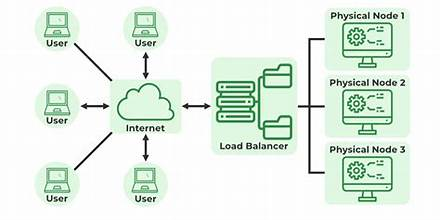Unlock the future of Sustainable Mobile App Development with proven strategies for reducing energy consumption, optimizing performance, and building eco-friendly apps. Learn coding techniques, cloud optimization, AI-driven efficiency, and tools that help lower your app’s carbon footprint.

Sustainable Mobile App Development: 7 Powerful Strategies for Energy-Efficient & Eco-Friendly Apps
Sustainable Mobile App Development has become a mission-critical priority for modern businesses, developers, and technology leaders. In a world increasingly powered by mobile devices, every line of code, API request, or animation has an environmental cost. As digital usage grows, the energy demand behind cloud services, data transmission, and device processing grows with it.
Studies show that the ICT industry contributes between 2–3% of global carbon emissions, and inefficient software is a major contributor. This means developers now play a direct role in shaping a greener digital future.
Sustainable Mobile App Development is not just an ethical choice — it improves performance, reduces operational costs, increases battery efficiency, and strengthens brand trust. This article explores strategies, architectures, and tools that help build sustainable apps without compromising speed or innovation.
-
Introduction to Sustainable Mobile App Development
-
Why Sustainable App Development Matters
-
Energy-Efficient Coding Practices
-
Lightweight & Efficient Mobile Architectures
-
Green Cloud & Infrastructure Optimization
-
Sustainable App Lifecycle Strategies
-
AI-Driven Energy Optimization
-
Monitoring Tools & Analytics
-
Case Studies in Green Development
-
Developer Checklist
-
Business & Strategic Impact
-
Future Outlook: Green Mobile Tech
-
Conclusion
In the era of digital transformation, mobile applications are no longer just tools for productivity, entertainment, or commerce — they are central to human connectivity and business operations. But as the number of devices, apps, and cloud services skyrockets, so does the digital carbon footprint. Reports indicate that the ICT sector contributes around 2–3% of global carbon emissions, and a significant portion of this comes from software inefficiencies and energy-intensive mobile ecosystems.
Sustainability is no longer optional; it has become a strategic imperative for tech leaders, developers, and enterprises. Sustainable and energy-efficient app development not only reduces environmental impact but also improves performance, reduces costs, and enhances user trust.
This article explores comprehensive strategies, tools, and best practices for creating sustainable mobile apps, from energy-conscious coding to green cloud infrastructure and AI-powered optimizations.
Why Sustainable App Development Matters
Mobile devices are ubiquitous: billions of smartphones are used globally, consuming energy in data transmission, processing, and storage. Consider these statistics:
- An average smartphone user generates several kilograms of CO₂ annually through app usage, network activity, and cloud syncing.
- Apps that continuously poll servers, perform unnecessary background operations, or use heavy animations can drain the battery and increase energy consumption.
- Enterprises with inefficient software risk higher cloud costs, poor user experience, and negative ESG perceptions among stakeholders.
Sustainable development is about designing software that delivers high performance while minimizing energy consumption and environmental impact. The concept extends beyond coding to include architectures, deployment strategies, and operational workflows.
1. Energy-Efficient Coding Practices
Optimizing CPU and GPU Usage
The CPU and GPU are the primary consumers of battery and energy. Energy-efficient coding focuses on:
- Avoiding unnecessary loops, computations, or background threads
- Reducing wake locks in Android and keeping tasks in the background to a minimum
- Offloading heavy computations to server-side or edge processing
Example: Mobile AI models should use quantized or pruned models to reduce on-device computation without sacrificing accuracy.
Memory Management and Leak Prevention
Memory inefficiencies lead to frequent garbage collection (GC), which increases CPU load:
- Use lazy initialization to load objects only when needed
- Employ object pooling for frequently used objects
- Detect and fix memory leaks using profiling tools (Android Profiler, iOS Instruments)
Network Optimization
Network calls are energy-intensive:
- Batch requests instead of frequent polling
- Cache data locally where possible
- Compress payloads using JSON minification or Protobuf/FlatBuffers
- Prioritize incremental updates over full downloads
Tip: Use adaptive network scheduling to perform background syncs during Wi-Fi availability or low network congestion periods.
2. Lightweight Architectures for Energy Efficiency
Architecture influences app efficiency more than any single line of code. Lightweight, modular architectures reduce redundant computations, data transfer, and memory usage.
Modular Design
- Break the app into smaller, independent modules
- Load modules on demand (dynamic feature loading)
- Prevent unnecessary code execution in inactive features
Lazy Loading & Deferred Initialization
- Load UI components and resources only when visible or needed
- Use placeholders and skeleton screens to improve perceived speed
Efficient Data Handling
- Avoid storing large datasets on the device unless required
- Use streaming APIs for large media content instead of full downloads
- Implement database indexing and optimized queries (SQLite, Room, CoreData)
3. Green Cloud and Infrastructure Optimization

Cloud infrastructure accounts for a substantial portion of energy usage in mobile apps. Optimizing cloud operations is essential:
Serverless and Event-Driven Architectures
- Use serverless platforms (AWS Lambda, Google Cloud Functions) to run compute only when needed
- Event-driven models reduce idle server consumption
Low-Carbon Data Centers
- Choose cloud providers with renewable energy commitments
- Prefer regions with lower carbon intensity for deployments
Efficient CI/CD Pipelines
- Automate testing and builds, but avoid excessive redundant runs
- Use containerization (Docker/Kubernetes) to maximize resource sharing and reduce idle compute
Example: Schedule nightly batch processes during off-peak hours to reduce energy costs.
4. Sustainable App Lifecycle Strategies
Sustainability must be embedded across the app lifecycle, from design to maintenance:
Design Phase
- Evaluate energy footprint during UX prototyping
- Choose animations and transitions that are visually appealing yet lightweight
Development Phase
- Adopt performance-first coding standards
- Set energy usage KPIs for features
Testing Phase
- Perform real-device testing for battery and CPU profiling
- Use synthetic load testing to estimate energy usage in high-traffic scenarios
Monitoring Phase
- Implement real-time energy telemetry using tools like Firebase Performance Monitoring, Instabug, Sentry, or New Relic
- Continuously evaluate app updates for energy regression
Maintenance Phase
- Regularly prune unused code, assets, and dependencies
- Update third-party SDKs to more efficient versions
5. AI-Driven Energy Optimization

Artificial intelligence can help automate energy efficiency:
- Predictive caching: ML models predict which content users will access and prefetch efficiently
- Dynamic resource allocation: Adjust CPU/GPU usage based on user behavior patterns
- Adaptive sync intervals: AI decides when to perform background syncs to minimize energy use
- Anomaly detection: Identify features or processes consuming abnormal battery or CPU power
Example: A news app can intelligently decide which articles to preload based on user reading patterns, reducing unnecessary network calls.
6. Monitoring Tools and Analytics
Monitoring is critical to validate energy efficiency:
| Tool | Purpose |
| Android Profiler | CPU, memory, network, energy consumption |
| iOS Instruments | CPU/GPU, memory, energy impact, network |
| Firebase Performance Monitoring | Network, startup time, screen rendering |
| Instabug | Crash and performance reporting |
| Sentry | Error tracking and user impact analytics |
| Datadog / New Relic | Full-stack monitoring including server-side efficiency |
Key metrics to track:
- App startup time (cold/warm start)
- CPU and memory peaks during feature execution
- Battery drain per session
- Network data consumption
- API latency and retry impact
7. Case Studies in Green App Development
Case Study 1: FinTech App
A mobile banking app reduced energy usage by 35% by:
- Switching to lazy-loaded transaction history
- Optimizing API calls with batching
- Migrating analytics to serverless cloud functions
Outcome: Improved user retention and reduced backend energy cost.
Case Study 2: On-Demand Video Streaming
- Implemented adaptive bitrate streaming to save bandwidth and device energy
- Preloaded only user-preferred content
- Introduced efficient caching of media assets
Outcome: 20% lower battery consumption and 15% less server load.
8. Developer Checklist for Sustainable Apps
| Category | Action Items |
| Coding | Optimize loops, background threads, and memory usage |
| UI/UX | Skeleton screens, lightweight animations, lazy loading |
| Networking | Batch requests, compress payloads, offline caching |
| AI & ML | Use quantized models, edge computing, predictive prefetching |
| Infrastructure | Serverless, containerization, low-carbon data centers |
| Monitoring | Real-time telemetry, CI/CD energy regression tests |
| Maintenance | Prune unused assets, update SDKs, refactor code |
9. Business & Strategic Impact
Sustainable apps yield tangible business benefits:
- Cost Savings: Lower energy consumption reduces cloud bills
- Brand Equity: Users associate efficiency with responsibility
- Retention & Engagement: Fast, lightweight apps improve UX and reduce churn
- Regulatory Compliance: ESG reporting increasingly factors in digital carbon footprint
Companies adopting sustainable software practices are positioned as innovation and responsibility leaders, gaining trust among consumers, partners, and investors.
10. Future Outlook: Green Mobile Tech
The next decade will see:
- Edge AI and compute offloading to minimize server calls
- Dynamic app scaling based on device energy state
- Integration of carbon tracking in development pipelines
- Carbon-aware scheduling for CI/CD pipelines
- Cross-platform green SDKs promoting energy efficiency across Android, iOS, and Web
Sustainable app development is evolving from best practice to necessity, where environmental impact is a core performance metric.
Conclusion
Mobile apps have immense power — but that power comes with environmental responsibility. Sustainable and energy-efficient development is not only ethical but also strategically advantageous, improving performance, cutting costs, and building brand trust.
By adopting:
- Energy-efficient coding
- Lightweight, modular architectures
- Green cloud infrastructure
- AI-driven optimization
- Continuous monitoring and maintenance
developers and enterprises can build apps that delight users while protecting the planet.
Sustainable app development is no longer a niche concept; it is the future of mobile innovation, where performance, responsibility, and business impact converge.
Code for the planet. Optimize for the user. Innovate sustainably.


